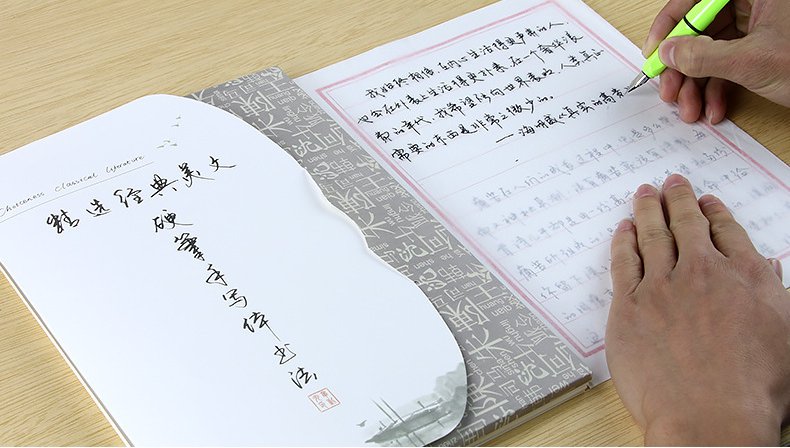Beginners, in addition to considering their own preferences and needs when choosing copybooks, they should also be careful not to choose copybooks that are too personalized. Copybooks that are too individualistic often contain elements that are almost habitual, and if you don't get effective guidance, they may lead you astray.

Choose a copybook with larger characters and clear writing
Because most of the hard-pen copybooks are written with pens, the characters are too small. Although the strokes are fine and the structure is rigorous, it can easily cause writing fatigue to practitioners and is inconvenient for beginners to copy. By the way, copying is mentioned here, that is, writing with a copybook covered. Most people ignore copying and think that only primary school students do this. However, they do not know that copying is a key step in practicing calligraphy and an effective way to avoid "copying" without learning. A person who does not copy but only copies (writes according to the copybook) will find it difficult to discover the shortcomings of his own writing. Only by copying first and then copying, and by combining copying and copying, can progress be made. It is easier to see clearly and carefully if you compare the larger characters when writing the calligraphy. Therefore, if you find that the strokes of the hard-pen calligraphy are not clear, or the handwriting is blurred and the strokes are thick and swollen due to printing reasons, you should give up.
After selecting the copybook, you can use a copy machine to enlarge the copybook to a suitable size for copying.
Choose excellent ancient small regular script templates
History is the most just, and truly good things can withstand the test of time. Therefore, if you want to find an authoritative copybook, it is absolutely right to go to a copybook of ancient fine regular script. However, you cannot deliberately modify the beginning and end of the strokes. After all, there is a qualitative difference between a brush and a hard pen, and there must be a certain degree of quality. Educational level and identification ability. There are too many false characters, variant characters, and irregular traditional Chinese characters in ancient copybooks. Of course, it is best to have a teacher to guide you. If you already have a certain foundation in calligraphy, it is recommended that you quickly find a small regular script model by an ancient famous master. It is a two-pronged approach that is of great benefit.
It is recommended that you use soft pencils 2B-5B for writing. There are three benefits of using a pencil: first, there is no problem of improper use of the pen to scratch the paper, and the writing can be smooth and smooth; second, the pencil has a delicate pen, which avoids using the pen to pursue pointillism too much. Careful carving, using too much force and ignoring the weight of the strokes; the three thick strokes can be used to write large characters similar to the original calligraphy, which not only maintains the law but also eliminates the sense of restraint and restraint.
The following types of copybooks are recommended for reference:
Three Kingdoms Zhong Yao's "Recommendation of Seasons" and "Declaration of Statements" (Wang Xizhi's version)
Eastern Jin Dynasty Wang Xizhi's "Huang Ting Jing", "Lin Zhong Yao's Statement", "Tao Te Ching" (Lin version by Zhao Zi'ang)
Eastern Jin Dynasty Wang Xianzhi's "Thirteen Lines on the Jade Edition of Luo Shen Fu"
Sui Zhiyong's "The Thousand-Character Essay on Zhencao"
Sui Dynasty "Epitaph of Dong Meiren"
Tang Ouyang Xun, Chu Suiliang, Yu Shinan
Tang Zhong Shaojing's "Ling Fei Jing"
Song Su Shi, Mi Fu, Huang Tingjian, Zhao Ji
Yuan Dynasty Zhao Ziang's "Ji An Biography" and "Tao Te Ching"
Ming Wang Chong, Wen Zhengming, Zhu Yunming
Modern Deng Sanmu








